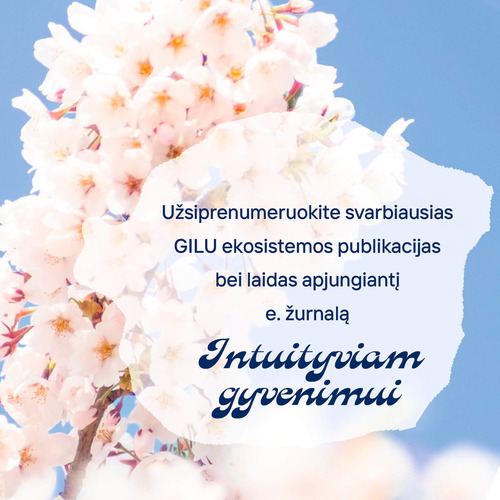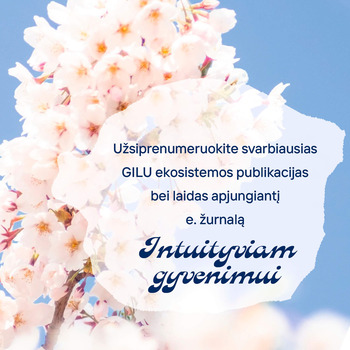Publications
- Home
- Publications
- Brazilian Onto - Art: letting beauty into your life is about taking care of yourself
Brazilian Onto - Art: letting beauty into your life is about taking care of yourself
2022 08 20LRT.lt
Carol Miranda, an Onto - Art practitioner from São Paulo, creates and teaches others with great joy and responsibility. She was one of the few disciples of the pioneer of Onto - Art, Professor Antonio Meneghetti, and a follower of his philosophy. Onto - Art is not only about creative techniques, it is also a way of life that promotes harmony, beauty and, at the same time, the artist's responsibility not to burden the viewer with the shadows of his or her subconscious. We speak to C. Miranda ahead of her visit to Lithuania and Latvia organised by Amres Art Gallery.
- Carol, how did you discover and start following the Onto - Art?
- I had a gift for art and creativity from birth, but it took me a while to discover the Onto - Art. First of all because it is not only a way of painting, but also a way of living. It is a philosophy of life.
My first contact with Onto - Art was when I was eighteen to twenty years old and I started working as a secretary for the Ontopsychology Association in Brazil. It was then that I first saw the paintings of the founder of ontospychology and the Onto - Art, Professor Antonio Meneghetti. I found them unusual and strange, but at the same time I was very attracted to them and felt that they had a good effect on me.
I wanted to know more about the Ontomen, and I started to look into it more. When I was 28, I went to Italy to learn live from the professor himself. I not only studied but also worked with him for ten years; I'm a graphic designer by training, which is what I did in Italy.
A. Meneghetti taught me how to feel the space, the colours, the letters, how to create an advertisement, a cover, an invitation, which would immediately convey the essential message, emphasise the most important goal, spread good energy. It must be said here that Meneghetti was a scientist, so he was very precise, very reasoned, very demanding when teaching these subtleties.
He said that the Onto - Art has always existed, but that he created a concept, a new name for it. For example, Zen art in Japan talks about the same things. It is the art of being, the art of life, it conveys life.
Later on I started to study interior design, and I made silk products with his paintings. My professor taught me how to paint on clothes. After his death, I started to paint my own paintings on canvas and now I continue to do so.
It is a great privilege and responsibility to have had the opportunity to learn from Meneghetti himself. I feel that I need to put all my experience and knowledge in a book one day.
- The professor said that the Onto - Art has always existed, but that it was established in Italy in the 1970s. As far as I know, this was a very creative, organic context?
- Yes, indeed - it was a meeting with a group of artists from different fields. Mr Meneghetti asked them, while he was playing the piano, to create - to paint, to photograph - whatever they wanted to do at that moment, whatever they felt. After this creative session, he said it was a wonderful experience.
A. Meneghetti later organised an exhibition and displayed what was created during that creative process. Everything sold instantly. Why did people like it? The creative process that led to the creation of those artworks was so bright and lively that it was reflected in the artworks.
- "Alive", "vital" are important words in Onto - Art, right?
- Very much so, they are essential. One of the most important principles of the Onto - Art is that it has to be vital, that it has to transmit the most important humanistic values, that it has to respect nature, respect man. It must be beautiful. Contemporary art does not emphasize beauty, sometimes on the contrary - it looks for inspiration in problems, in pain, it raises sensitive, painful issues. But it is beauty that is our food for the soul, that helps us to live a quality, fulfilling life.
I have watched the excellent BBC documentary 'Why Beauty Matters', in which the philosopher Roger Scruton's ideas are completely in line with Meneghetti's philosophy.
- Let us stop with beauty. How does it affect us beyond aesthetic satisfaction?
- Some time ago, we learned that we need to take care of our bodies. Nobody questions whether it is right or wrong to smoke, why it is necessary to exercise, to eat healthily, to get a good night's sleep. During the pandemic period, we started talking more about emotional health. Bringing beauty into our lives is also about taking care of ourselves, which has an impact on our well-being, our thinking, our quality of life. Everything is connected - how we feel, how we think, how we speak, how we act.
Art - not only painting, but also music, dance, architecture, etc. - has a huge impact on us that we sometimes don't realise.
It should be added that beauty is not only about art. It is about the flowers you have just picked in your living room, it is about the way you dress, the way you wake up, the food you eat. There can be a lot of beauty in everyday life, too. It is very important to take care not only of what you put in your body, but also of what you look at, listen to, read. Especially nowadays, it is very difficult to keep that inner cleanliness, to see more beauty and to feel inner balance, but it is worth it and it is necessary.
- The space, the environment that surrounds us, is also important. Meneghetti has brought up the idea of genius loci, could you explain it briefly?
- The concept itself dates back to the Romans. It's the energy, the spirit of a place, which is hard to describe, but when you're there you feel it immediately. Mr Meneghetti has discovered several places in the world, beautiful corners of nature, that have such a strong energy that you just feel better immediately. One of them is Lizaris in Latvia, where I will be giving Onto - Art classes at the end of September, on the autumn equinox.
By the way, people have been building temples and monasteries in such special places since ancient times - it has always been important to discover and give meaning to these places.
- Is beauty universal or subjective?
- I am very impressed by places like the Parthenon in Athens, which was built taking into account the angle of vision, the physiology of the human being. It's about proportions, moderation, principles. We can feel it and see it. It is universal.
True beauty also has universal humanistic values. For example, it is the freedom to choose what your nature and vocation dictate, it is social communion and strong bonds between people, it is dignity, and it is active living - movement, continuous learning, creativity.
My master's thesis was on humanistic values in advertising. I remember at one point in my career I felt I was in crisis: I was increasingly disgusted with the advertising industry's attempts to persuade people to buy something, to manipulate them, and it was just debilitating. When I started working with Meneghetti, I realised that there was a way to work in advertising without encouraging unconscious consumption.
- Onto – Art is also very important in terms of the state in which the artist works, how he nurtures his spiritual health. How do you take care of yourself as an artist? Do you have certain rituals, routines?
- We all have a subconscious and a dark side to it. It's very important that the artist doesn't create them under stimulation, because it affects the psyche of the audience. People will subconsciously feel it and accept some of that state themselves.
A. Meneghetti has said a lot about how an artist has to take care of himself, his emotional health, and to feel responsible towards the viewer, not to pollute his psyche with his psychological problems. What to do? Solve them in other ways, and ultimately with art itself as a therapeutic tool, but then don't show it to the general public.
When I am in a darker mood, I start to create something for myself and I feel that I am getting lighter, better, look, I move into a completely different, positive state and then I start to create not only for myself but also for others.
From Meneghetti I learnt that it is best to create in an orderly, clean space, that is very important. So I usually start by tidying up and that alone makes me feel better. Finally, if I feel out of balance, I read at least a page from an ontopsychology book, and that alone helps me to connect with this philosophy, to feel my own self again.
Now I am experimenting a lot with different techniques and I feel that just learning something new is very uplifting, very empowering. At the moment I am looking for my own technique, my own method of creation.
- What do you imagine the future of Onto - Art to be like?
- I would like to see more exhibitions of Onto - Art all over the world, more artists who have delved into it, who have discovered it, this philosophy. I sincerely believe that it will become an even bigger movement. First of all, because we need the Onto - Art, its values, its beauty more than ever. We can see for ourselves what happens when we experience less beauty, when we forget the fundamental values.
https://rb.gy/akbcjr










